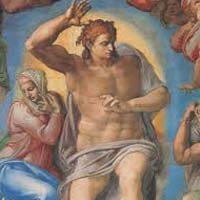
The historical evidence for Jesus of Nazareth
The historical evidence for Jesus of Nazareth is both long-established and widespread. Within a few decades of his supposed lifetime, he is mentioned by Jewish and Roman historians, as well as by dozens of Christian writings. Compare that with, for example, King Arthur, who supposedly lived around AD500. The major historical source for events of that time does not even mention Arthur, and he is first referred to 300 or 400 years after he is supposed to have lived. The evidence for Jesus is not limited to later folklore, as are accounts of Arthur.
What do Christian writings tell us?
The value of this evidence is that it is both early and detailed. The first Christian writings to talk about Jesus are the epistles of St Paul, and scholars agree that the earliest of these letters were written within 25 years of Jesus’s death at the very latest, while the detailed biographical accounts of Jesus in the New Testament gospels date from around 40 years after he died. These all appeared within the lifetimes of numerous eyewitnesses, and provide descriptions that comport with the culture and geography of first-century Palestine. It is also difficult to imagine why Christian writers would invent such a thoroughly Jewish saviour figure in a time and place – under the aegis of the Roman empire – where there was strong suspicion of Judaism.
What did non-Christian authors say about Jesus?
As far as we know, the first author outside the church to mention Jesus is the Jewish historian Flavius Josephus, who wrote a history of Judaism around AD93. He has two references to Jesus. One of these is controversial because it is thought to be corrupted by Christian scribes (probably turning Josephus’s negative account into a more positive one), but the other is not suspicious – a reference to James, the brother of “Jesus, the so-called Christ”.

Leave A Comment